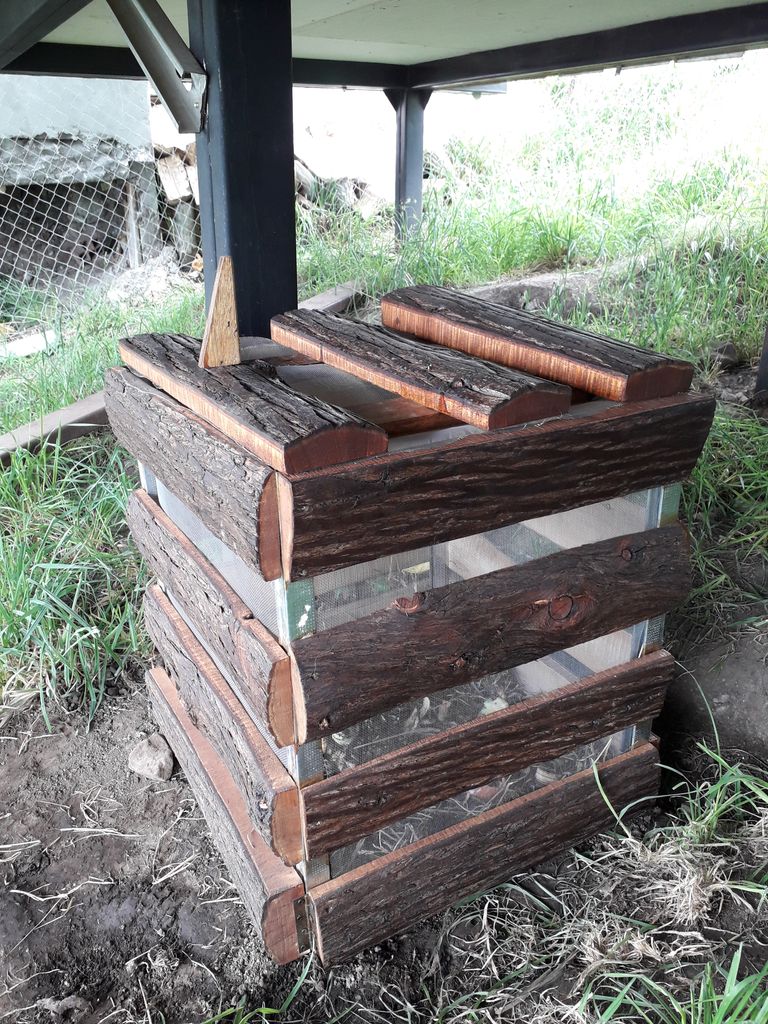
Para quienes amamos hacer jardin o la huerta sabemos la importancia que tiene el conservar y mejorar la tierra que, poco a poco, con el pasar de los años va perdiendo nutrientes, la capa de humus va desapareciendo y con ello la productividad que las plantas que cultivamos en ella.
De ahí que en los últimos años haya tomado mucha importancia el llamado "compostaje". Es una práctica centenaria, hasta milenaria (los antiguos egipcios durante el reinado especialmente de Ramsés II cultivaban en las orillas del rio Nilo porque al retirarse las aguas después de las inundaciones quedaban una capara de fango y limo que era el mejor nutriente para los cultivos).
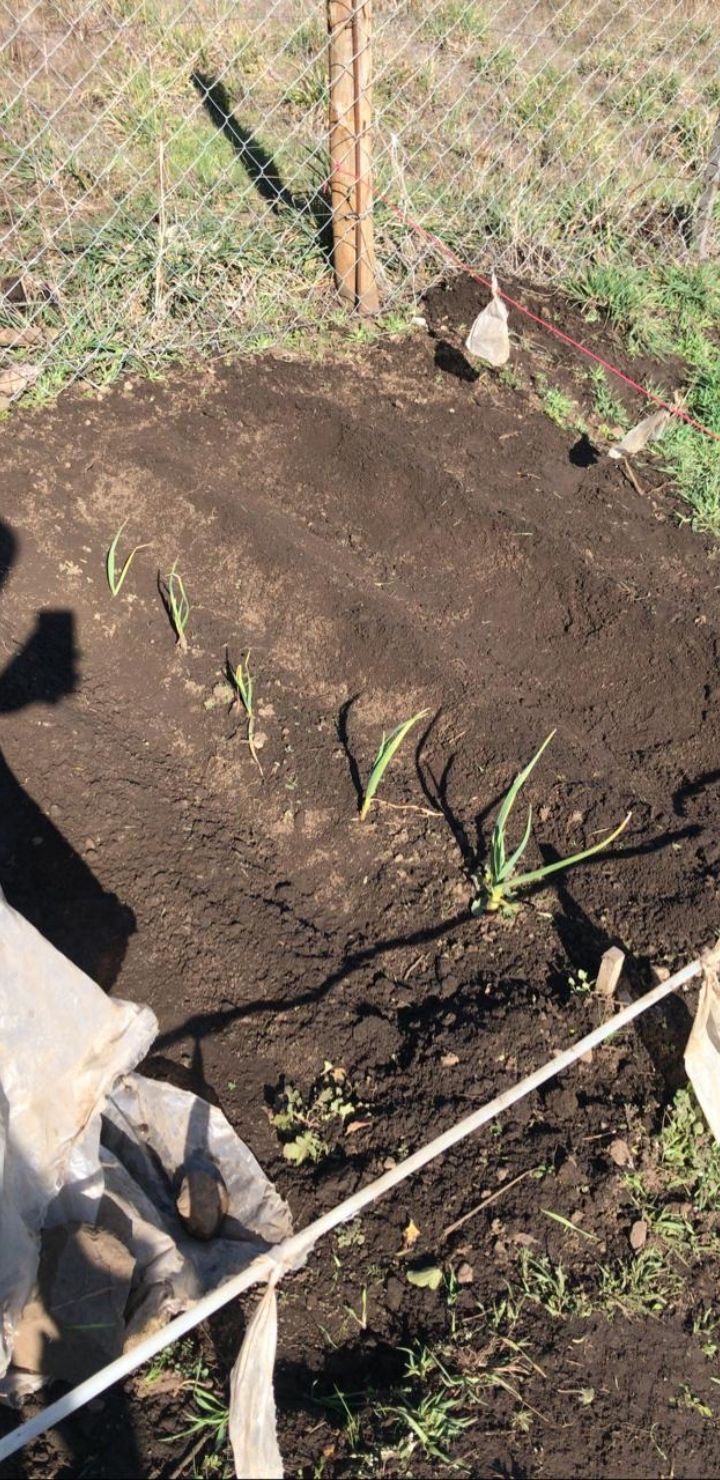
For those of us who love gardening or vegetable gardening, we know how important it is to preserve and improve the soil which, little by little, over the years is losing nutrients, the humus layer is disappearing and with it the productivity of the plants we grow in it.
That is why in recent years the so-called "composting" has become very important. It is a centuries-old practice, even millenary (the ancient Egyptians, especially during the reign of Ramses II, cultivated on the banks of the Nile River because when the waters receded after the floods, a layer of mud and silt remained, which was the best nutrient for the crops).
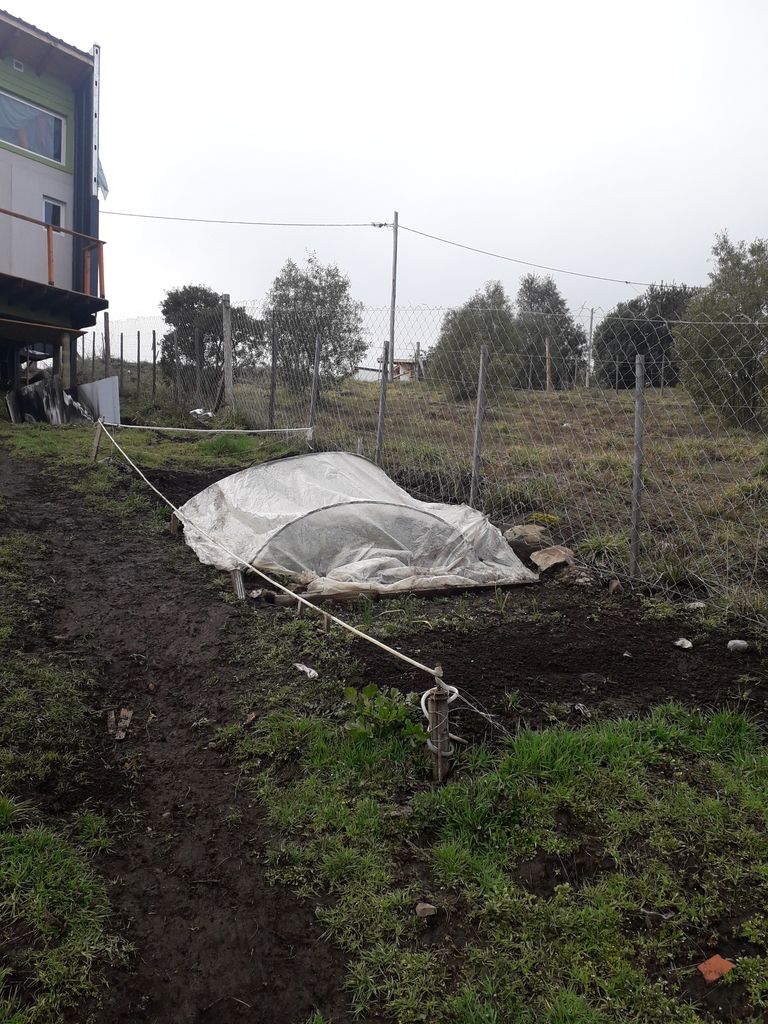
Quien tiene un espacio de tierra suficiente amplio puede hacer este compostaje directamente en la tierra abriendo surcos y echando en los mismos los desechos de comida, cáscaras de huevos y demás elementos orgánicos que con el pasar del tiempo se irán convirtiendo y transformando en tierra fértil. No necesitamos comprar nada. Solo aprovechar los residuos que normalmente tiramos.
En mi caso supervisado y controlado por mi mejor amigo.

Whoever has enough land space can make this compost directly on the ground by opening furrows and pouring in the same food waste, eggshells and other organic elements that over time will be converted and transformed into fertile soil. We don't need to buy anything. Just take advantage of the waste that we normally throw away.
In my case supervised and controlled by my best friend.
Si, en cambio, queremos preparar la tierra para un jardín pequeño, es recomendable hacer el compostaje a parte.
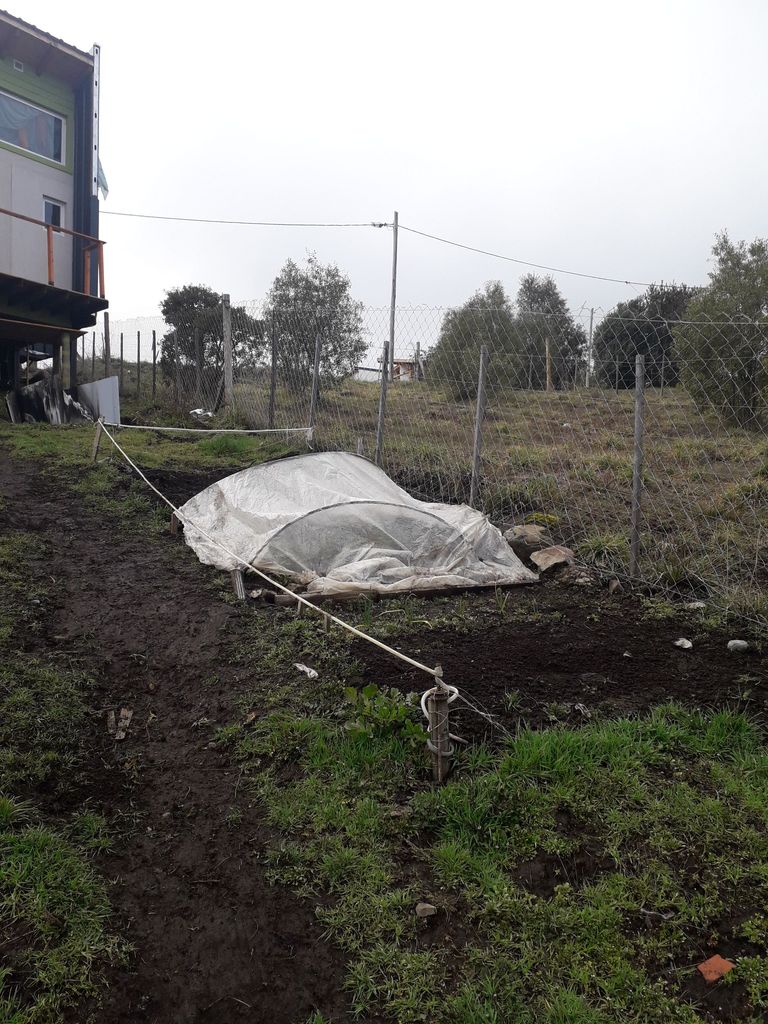
If, on the other hand, we want to prepare the soil for a small garden, it is advisable to make the compost separately.
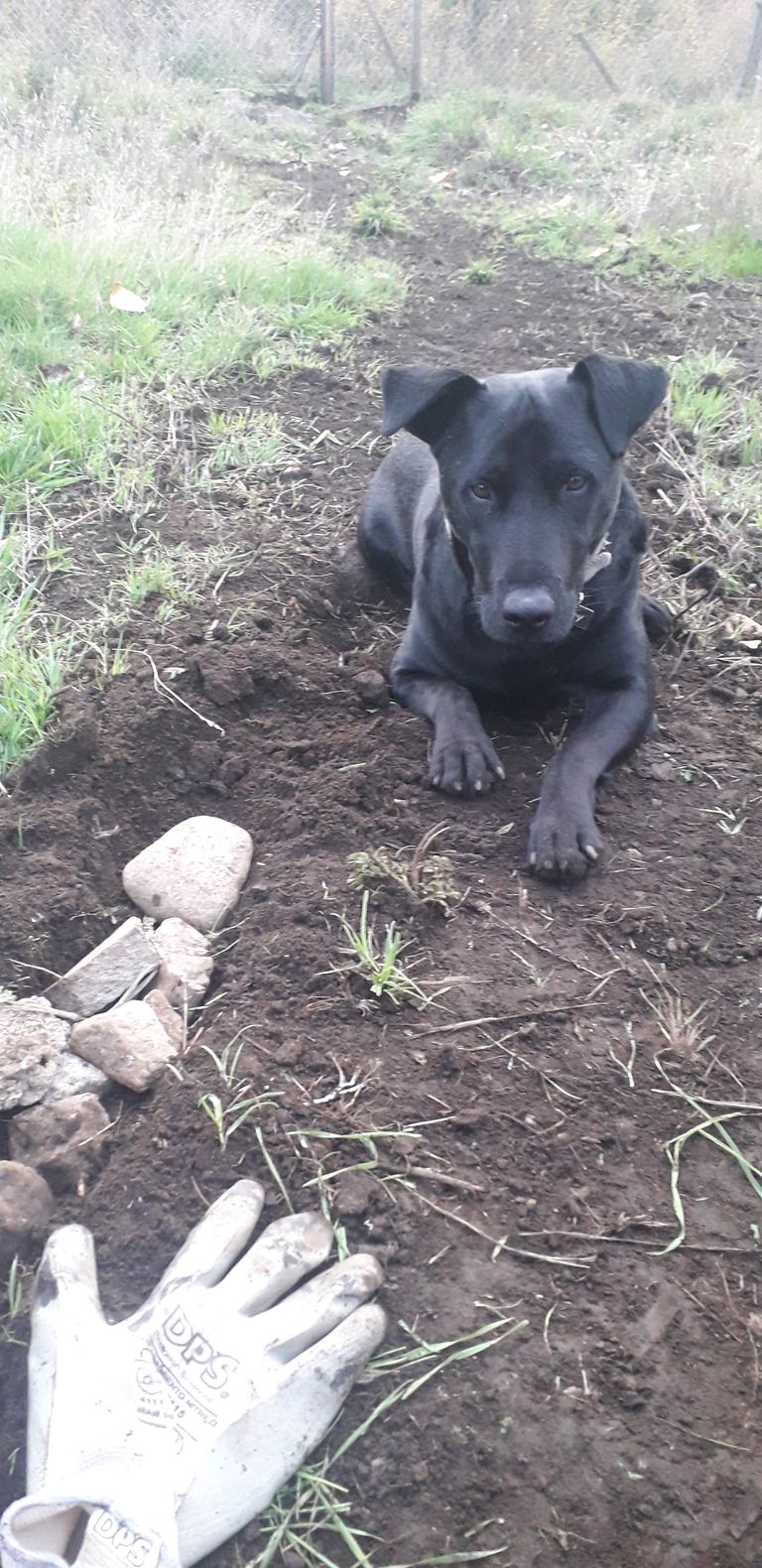
Hoy les voy a mostrar este paso, porque para hacerlo construí un recipiente especial de madera patagónica, dura y resistente a la intemperie, recintado con un tejido romboidal que permite el paso del aire pero es a la vez lo suficientemente cerrado como para impedir que se escapen los residuos, la tierra y la paja que les voy agregando de a poco.
Lo ideal es partir desde abajo con una capa de tierra no demasiado alta (todo dependerá de las dimensiones de la compostera). Por ejemplo mi compostera es alta unos ochenta centrimetros y cada capa la hago de unos cinco centimetros, es decir que en total entrarían dieciséis capas en toda la compostera.
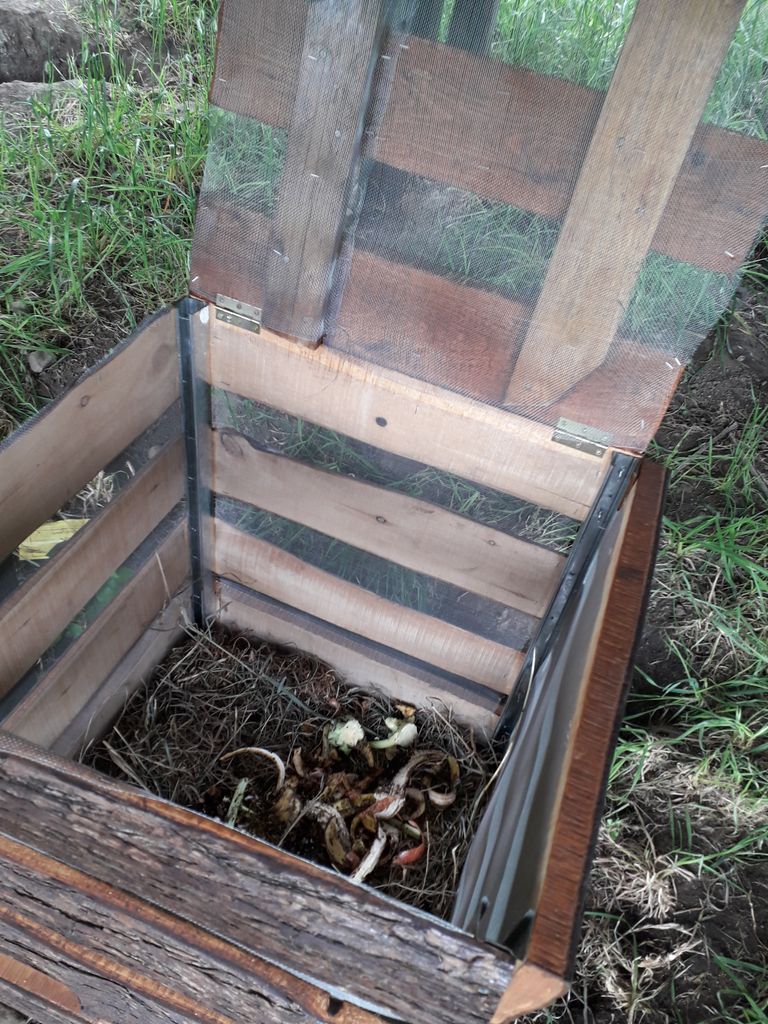 )
)Today I am going to show you this step, because to do it I built a special container made of Patagonian wood, hard and weather resistant, enclosed with a rhomboidal fabric that allows the air to pass through but at the same time is closed enough to prevent the waste, soil and straw that I add little by little from escaping.
The ideal is to start from the bottom with a layer of soil that is not too high (everything will depend on the dimensions of the composter). For example my composter is about eighty centimeters high and each layer I make it of about five centimeters, that is to say that in total sixteen layers would enter in all the composter.

Después de la capa inicial una agregaremos otra capa de residuos y encima una capa de paja seca.
Arriba de ella agregaremos una capa de tierra y probablemente deberemos dejar reposar un poco ya que los residuos domésticos tardarán unos días en acumularse.
Normalmente la compostera tardará en llenarse en un par de meses. En ese tiempo ya las residuos orgánicos incorporados al inicio y que van siendo aplastados con el agregado de las capas superiores habrán comenzado a transformarse.
El proceso completo tarda alrededor de un año.
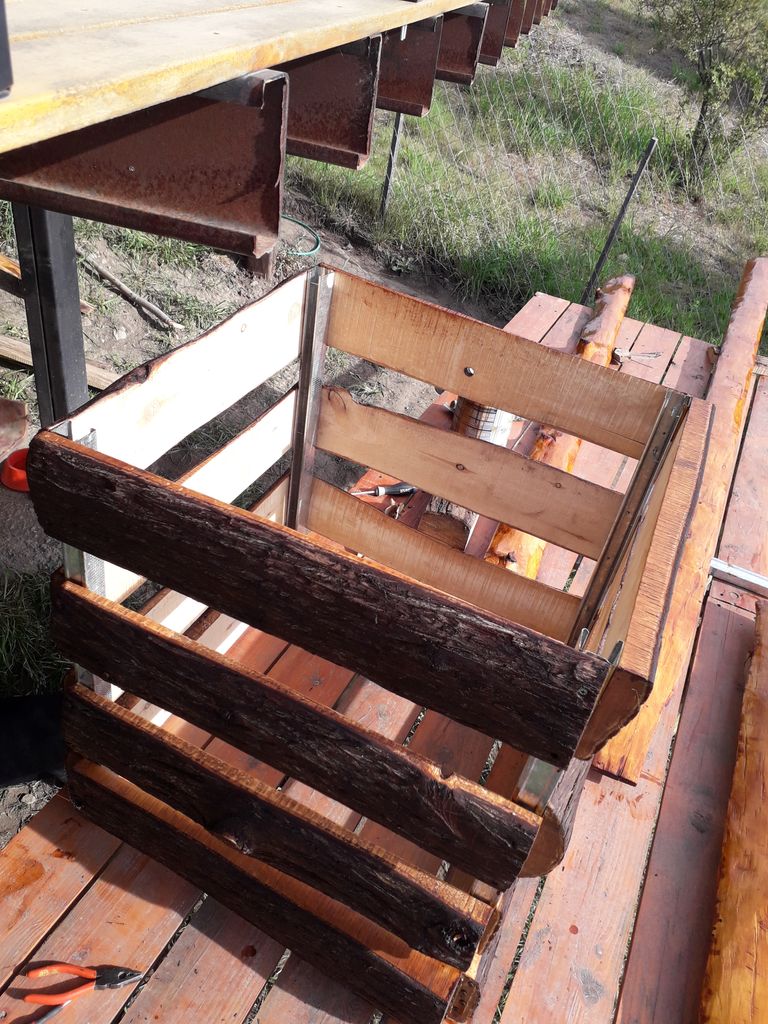
After the initial layer we will add another layer of residues and on top of it a layer of dry straw.
On top of it we will add a layer of soil and probably we will have to let it rest for a while since the domestic waste will take a few days to accumulate.
Normally the composter will take a couple of months to fill. In that time the organic waste incorporated at the beginning and being crushed with the addition of the top layers will have begun to transform.
The whole process takes about a year.
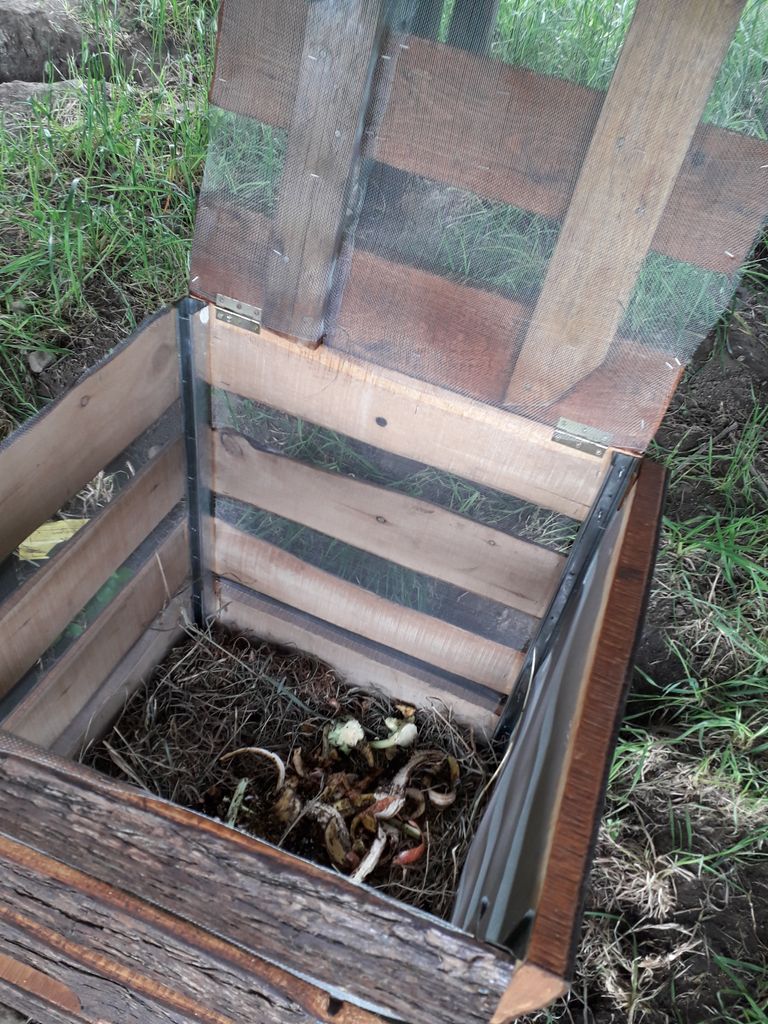
La parte inferior de la compostera consta de una pequeña abertura desd ela cual ir sacando de a poco la tierra fertilizada una vez que esté pronta para ser agregado a pequeños contenedores, por ejemplo macetas, donde iremos colocando las plantas aromáticas, de flores, etc.
O directamente la iremos agregando en un pequeño terrario que iremos cubriendo sucesivamente de capas de tierra.
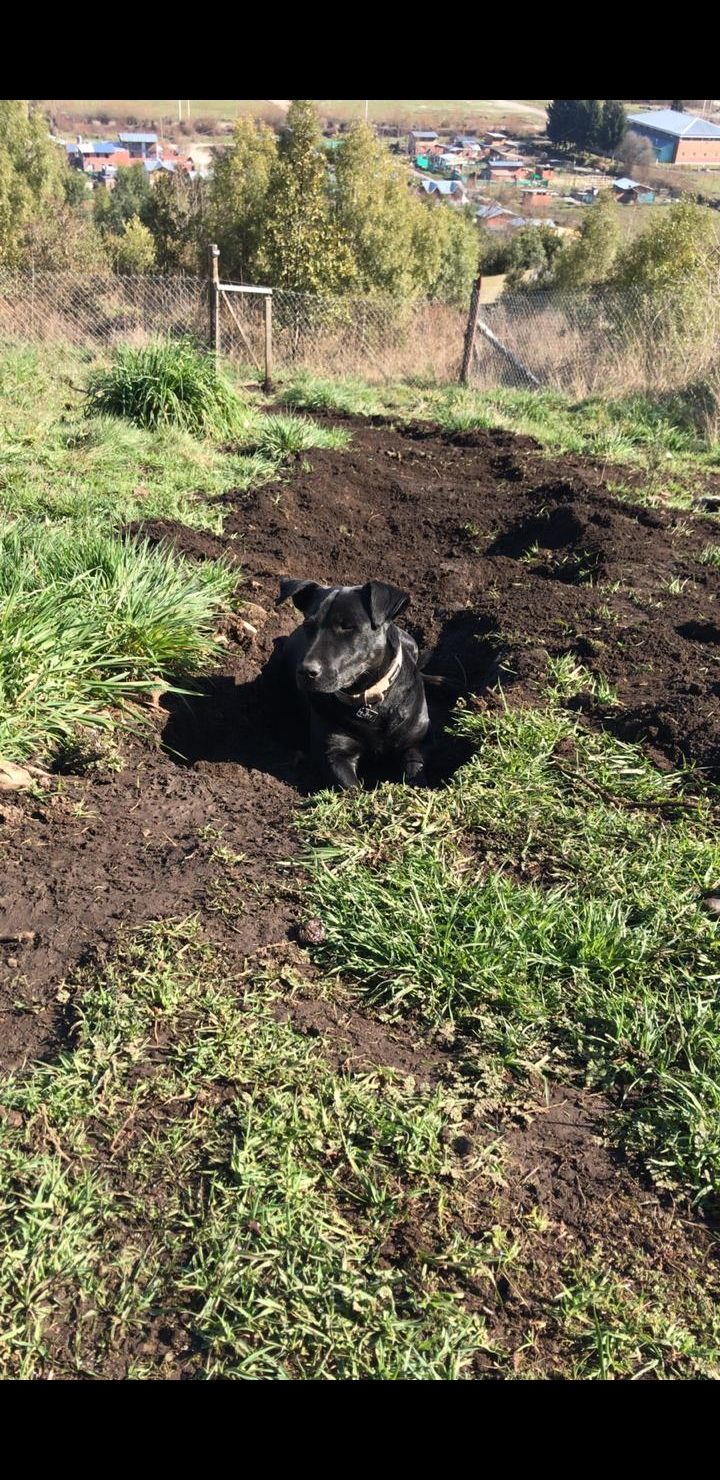
The lower part of the composter consists of a small opening from which the fertilized soil can be removed little by little once it is ready to be added to small containers, for example flower pots, where we will place the aromatic plants, flowers, etc.
Or directly we will add it in a small terrarium that we will cover successively with layers of soil.
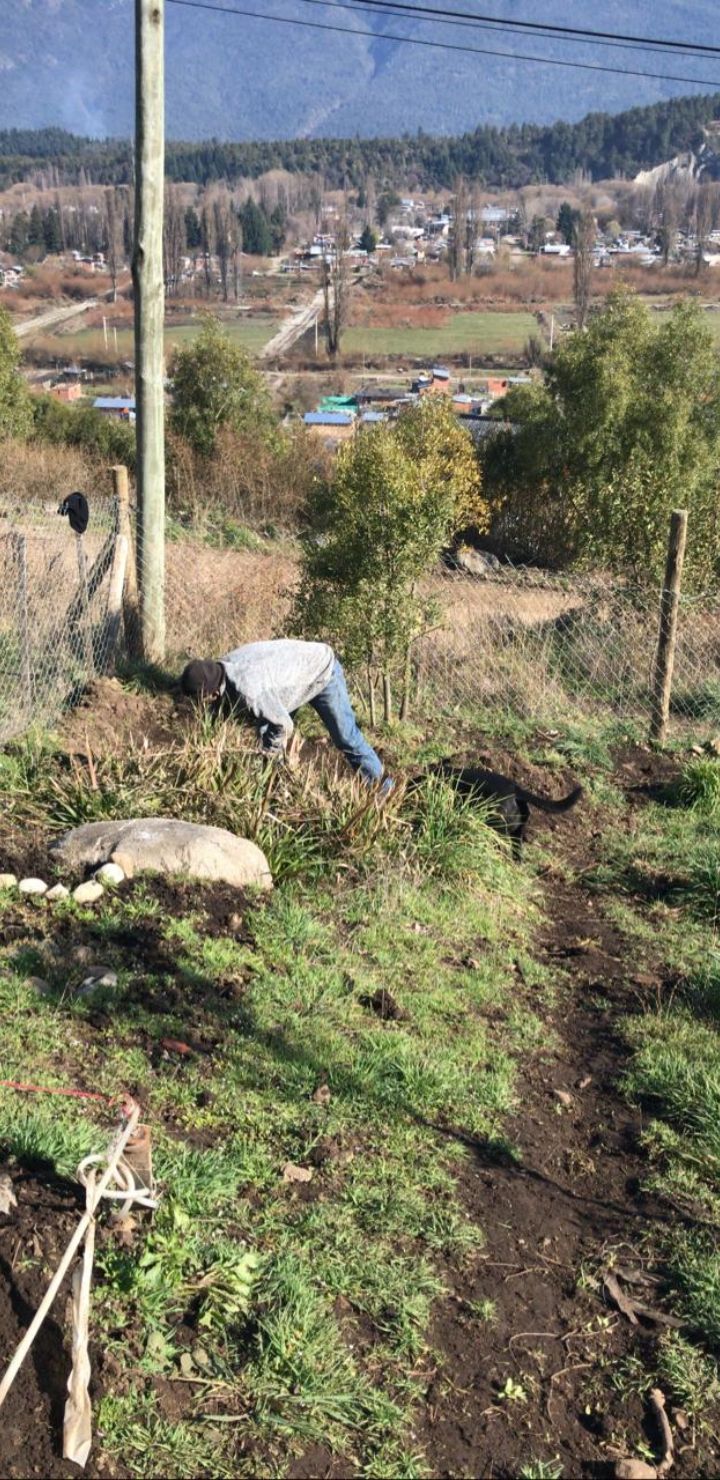
Es importante que este compostaje mantenga siempre cierta humedad u no quede expuesto directamente al aire.
A continuación les muestro uno de mis experimentos, estas hermosas plantas de albahaca cultivadas con el sistema de tierra fertilizada ecológicamente (compostaje) plantadas y desarroladas en macetas.> It is important that this compost always maintains a certain humidity and is not exposed directly to the air.
Below I show you one of my experiments, these beautiful basil plants grown with the system of ecologically fertilized soil (compost) planted and developed in pots.
See the result for yourselves.
Vean el resultado por Uds. mismos.
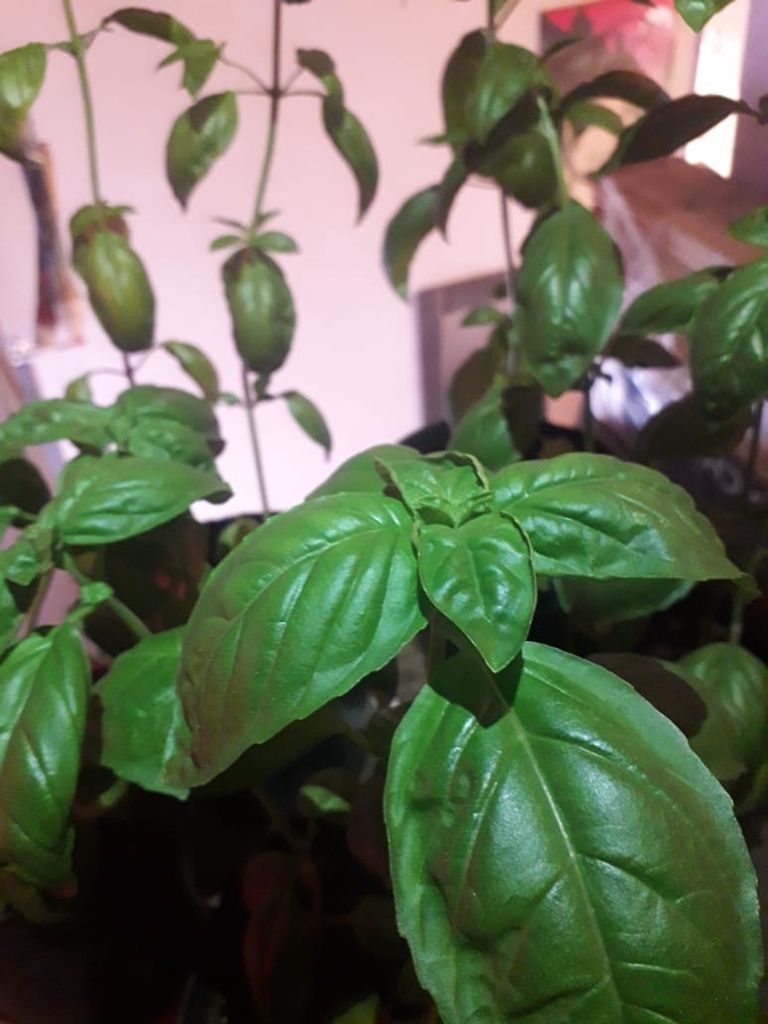
Este es el aspecto de mi huerta y jardín en pleno período de trabajos (realizados entre inicios de otoño y fin del invierno)
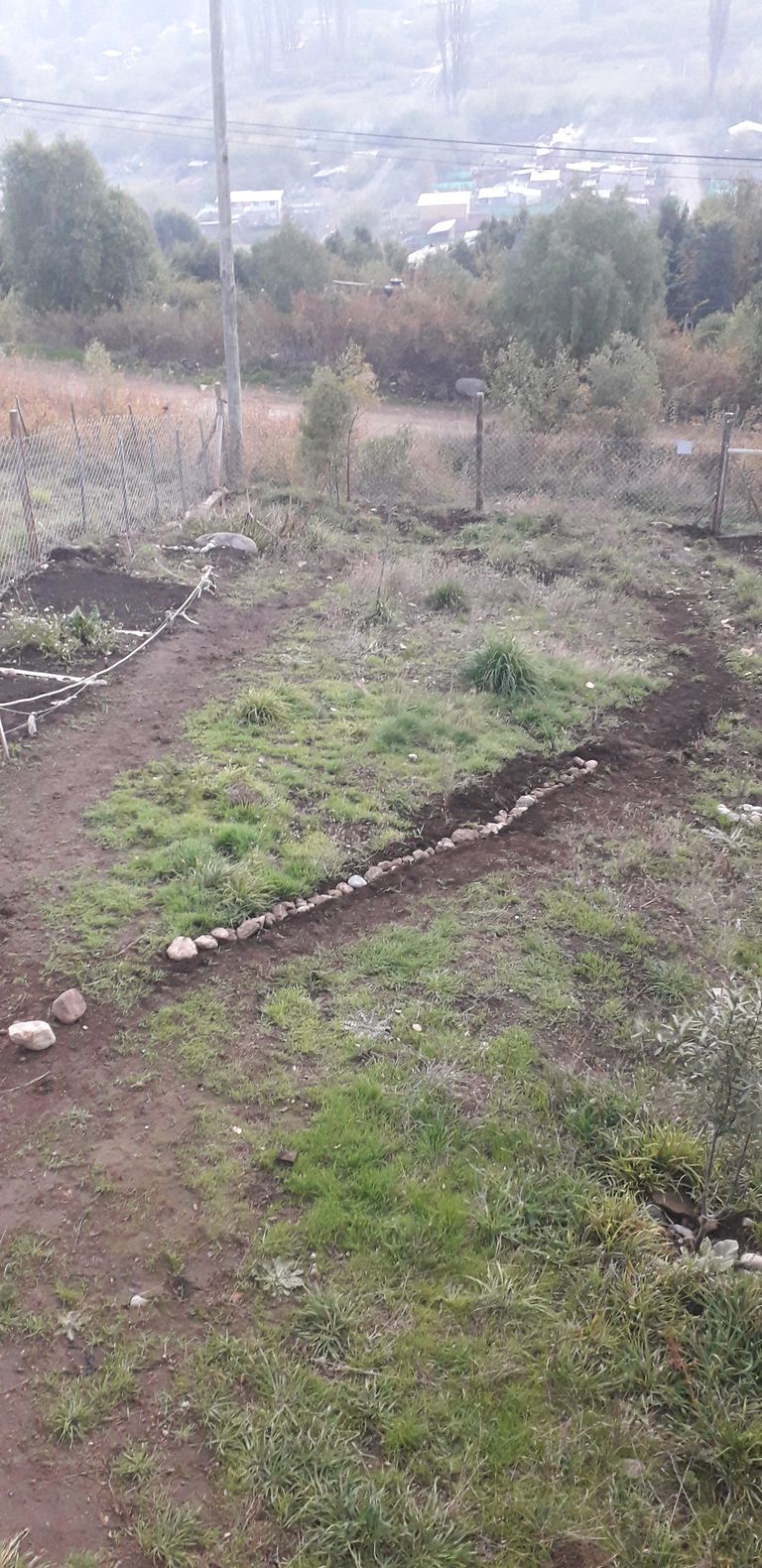
This is the aspect of my orchard and garden in the middle of the work period (carried out between the beginning of autumn and the end of winter).
Y como siempre me despido de todos con un:
And as always I bid you all farewell with a:

Mis Blogs y Sitios Web / My Blogs & Websites:
Imágenes propias / Own images
Dear @ollasysartenes, your content was selected manually by curators @nalexadre, @ten-years-before to receive a curation from BeBlurt 🎉
Thanks for supporting and curating my content @beblurt.
Congratulations, your post has been curated by @r2cornell-curate. Also, find us on Discord
Felicitaciones, su publication ha sido votado por @r2cornell-curate. También, encuéntranos en Discord
Gracias por curar y apoyar mis contenidos @r2cornell.